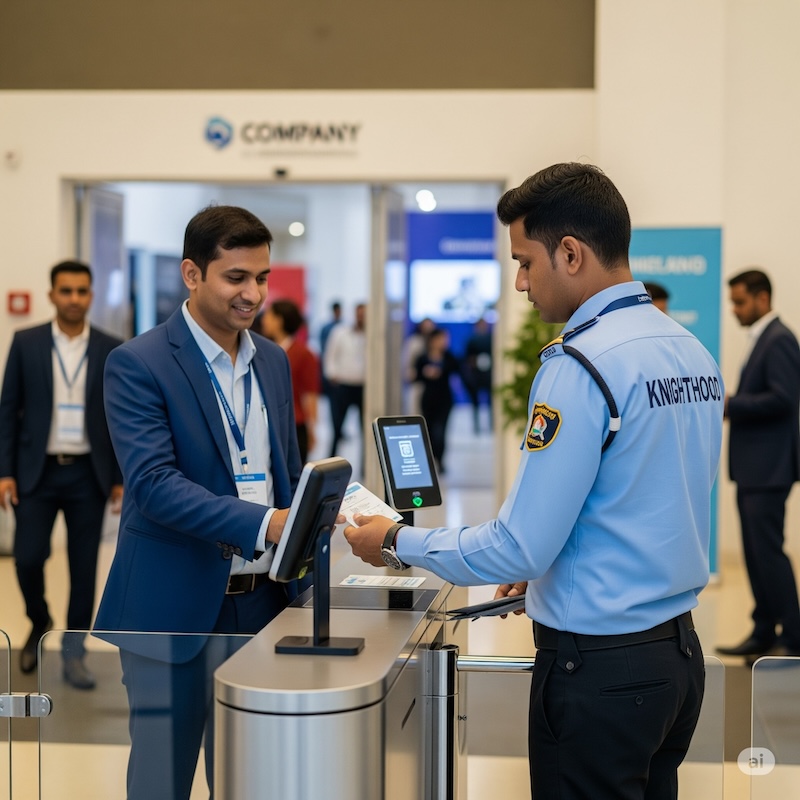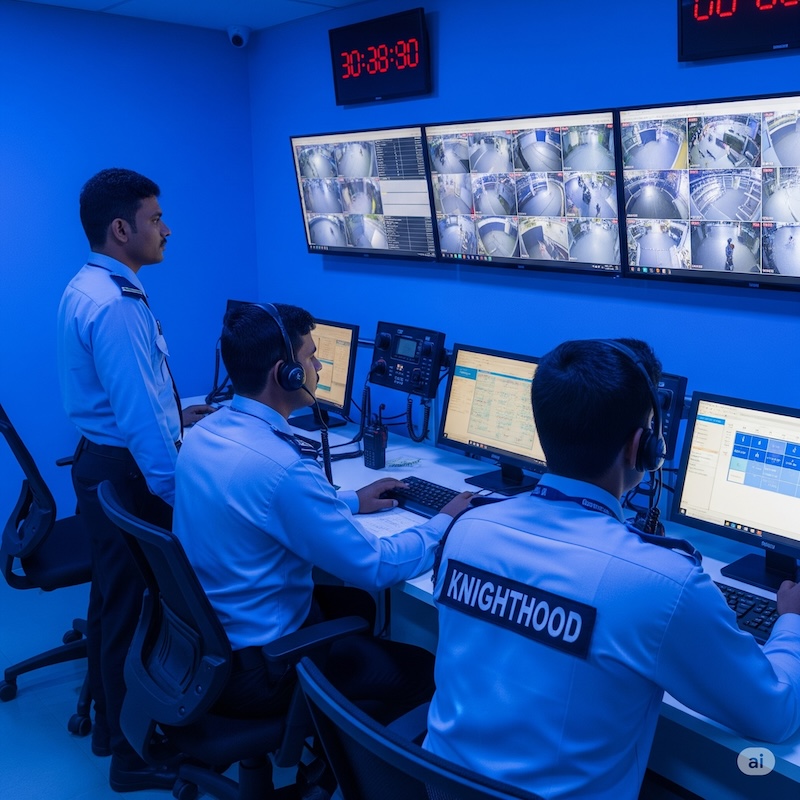Complete Guide to Event Security Planning: How to Protect Your Event from Start to Finish
Summary
Event security planning requires a systematic approach that begins during initial event planning and continues through post-event cleanup. Professional security teams assess threats, develop protection strategies, and coordinate with multiple stakeholders to create safe environments for attendees and information.
Key Points
- Risk assessment drives all security decisions and protective measures
- Qualified personnel must oversee security implementation and coordination efforts
- Venue inspection reveals critical security vulnerabilities before events begin
Key Takeaways
- Event security integrates with broader organizational security management frameworks
- Contingency planning prevents small incidents from becoming major disruptions
- Post-event procedures secure information and assess security performance
Planning a corporate event, conference, or public gathering? Security concerns keep many event organizers awake at night. One security oversight can transform a successful event into a crisis that damages reputations and endangers lives.
Modern event security goes far beyond hiring a few guards at the entrance. It's a comprehensive process that starts when you first brainstorm your event and doesn't end until the last attendee leaves the venue. Professional security planning protects people, information, and assets while maintaining the event's intended atmosphere.
Why Event Security Planning Matters More Than Ever
Today's events face diverse threats that range from cyber attacks targeting attendee data to physical security risks from unauthorized access. A single security incident can result in legal liability, financial losses, and permanent damage to your organization's reputation.
Consider the business impact of a security breach at your event. Sensitive information could be compromised. Attendees might be injured. Media coverage could focus on security failures rather than your event's achievements. These risks make professional security planning essential, not optional.
Event security planning also supports your organization's broader business continuity goals. When security incidents occur, well-prepared teams can maintain event operations and minimize disruptions. This preparation involves identifying critical functions, assessing vulnerabilities, and developing response procedures.
Core Elements of Professional Event Security Planning
Personnel and Leadership Structure
Every secure event needs clear leadership and accountability. Start by appointing an Event Manager who takes overall responsibility for security decisions. This person coordinates with all stakeholders and makes final security calls.
Next, designate an Event Security Officer (ESO) who implements day-to-day security measures. The ESO needs direct access to the Event Manager and deep knowledge of protective security principles. For larger events, the ESO may supervise a security team that includes specialists in different areas.
The ESO's responsibilities include coordinating communication between security personnel, providing security advice to event staff, and overseeing access control procedures. They also manage incident reporting and work with external agencies when necessary.

Comprehensive Threat Assessment
Professional threat assessment forms the foundation of effective event security. This process examines potential risks specific to your event, venue, and attendee profile. The assessment considers both internal and external threats.
Start by analyzing what needs protection at your event. This includes attendees, speakers, sensitive information, equipment, and the venue itself. Each asset may face different types of threats that require specific protective measures.
The threat assessment process aligns with ISO 31000:2018 Risk Management Guidelines. This framework helps security teams identify risks systematically and develop proportionate responses. The assessment should involve input from relevant departments and external agencies when appropriate.
Consider factors like the event's public profile, the sensitivity of information being discussed, and the backgrounds of attendees. High-profile events with controversial topics may attract protesters or media attention that requires additional security measures.
Detailed Security Plan Development
Your security plan translates threat assessment findings into specific protective measures. The plan evolves as event details become clearer and preparations progress. It should address all identified risks with appropriate countermeasures.
The security plan specifies what needs protection and why. It outlines the duration of security measures and identifies situations that might require increased protection. The plan also establishes clear roles and responsibilities for all security personnel.
Effective security plans consider both preventive and reactive measures. Preventive measures aim to stop incidents before they occur. Reactive measures help respond quickly when incidents happen despite preventive efforts.
Document all security procedures clearly so team members can follow them under pressure. Include communication protocols, escalation procedures, and coordination requirements with external agencies.
Venue Analysis and Location Security
Physical Security Assessment
Venue inspection reveals security vulnerabilities that could compromise your event. Professional security teams examine physical security features like door locks, lighting, and access control points. They also assess the venue's layout for security advantages and challenges.
Key areas of focus include controlling access to sensitive areas, managing entry and exit points, and identifying spaces where suspicious items could be concealed. The inspection also evaluates existing security measures and determines what additional protection is needed.
Transportation options around the venue affect security planning. Consider how attendees will arrive and depart, where vehicles will park, and how emergency services can access the venue if needed. These factors influence crowd control and evacuation planning.
Local law enforcement should be involved early in the planning process, especially if protest activity is anticipated. Police can provide valuable intelligence about local threats and coordinate their response capabilities with your security team.
Access Control and Entry Management
Controlling who enters your event is fundamental to security. This involves more than checking names against a guest list. Professional access control includes identity verification, credential management, and monitoring of entry points.
For major events, maintain a master list of participants with photo identification requirements. Issue accreditation passes that clearly identify authorized attendees and their access levels. Different areas of your event may require different access permissions.

Consider implementing multiple security zones within your venue. Public areas might have basic access control, while sensitive areas require additional verification. This layered approach helps protect critical information while maintaining event flow.
Entry control procedures should be efficient enough to avoid creating bottlenecks that frustrate attendees. Balance security requirements with the need to maintain a welcoming atmosphere that supports your event's objectives.
Information Protection and Sensitive Data Security
Protecting Confidential Information
Many corporate events involve discussions of sensitive information that competitors or other parties could exploit. Professional event security includes specific measures to protect confidential data and conversations.
When protectively-marked information is involved, security measures become more stringent. This may include strictly limiting the number of invitees, numbering and recording all documents, and securing meeting rooms from electronic recording devices.
Implement secure containers for storing sensitive documents during the event. Plan for the proper collection and disposal of any protectively-marked materials. Train staff on handling procedures to prevent accidental disclosure of confidential information.
Consider the information that will be produced during your event, not just what you bring to it. Meeting notes, participant lists, and even casual conversations might contain sensitive data that requires protection.

Digital Security Considerations
Modern events increasingly involve digital information that requires protection. This includes attendee databases, presentation materials, and electronic communications during the event.
Secure any technology used during the event, including Wi-Fi networks, presentation equipment, and recording devices. Unauthorized access to these systems could compromise sensitive information or disrupt event operations.
Plan for the secure disposal of any digital materials after the event. This includes wiping temporary files from computers and ensuring that sensitive data doesn't remain on shared devices.
Contingency Planning and Incident Response
Preparing for Multiple Scenarios
Effective contingency planning prepares your team for various incidents that could disrupt your event. These plans should address communication procedures, command and control arrangements, and alternative venues when necessary.
Common scenarios requiring contingency plans include bomb threats, medical emergencies, severe weather, and public demonstrations. Each scenario needs specific response procedures that your team can implement quickly.
Contingency plans should identify decision-making authority during emergencies. Clear lines of authority prevent confusion when rapid decisions are required. Include procedures for communicating with attendees, media, and external agencies during incidents.
Practice your contingency plans through exercises or simulations. This helps identify gaps in procedures and ensures team members know their roles during emergencies.
Incident Reporting and Documentation
Establish clear procedures for reporting and documenting security incidents. Attendees should know how to report concerns to security staff immediately. Security staff should have direct communication channels to the ESO.
Document all incidents thoroughly, including minor ones that might seem insignificant. Patterns in small incidents sometimes reveal larger security issues that require attention.
Follow up on all reported incidents to determine if additional security measures are needed. This might involve adjusting procedures for the remainder of the event or implementing changes for future events.

Media Management and External Communications
Coordinating Media Relations
Media presence at events creates both opportunities and security challenges. Work with event organizers to develop a comprehensive media plan that includes accreditation procedures and designated media areas.
Provide controlled access for media personnel with appropriate escorts. This prevents unauthorized viewing of sensitive information while accommodating legitimate media needs. Establish clear boundaries for where media can operate.
Prepare statements in advance for potential security incidents. Having pre-approved language ready helps ensure consistent messaging if incidents occur during your event.
Post-Event Security Procedures
Securing the Conclusion
Post-event security procedures are just as important as pre-event planning. These procedures include retrieving or disabling all access passes to prevent unauthorized future use.
Conduct a thorough search of the venue for any left-behind information or assets. Sensitive documents or equipment could pose security risks if discovered by unauthorized persons.
Return all security containers and submit a comprehensive security report. This report should document any incidents, assess the effectiveness of security measures, and recommend improvements for future events.
Continuous Improvement Process
Use post-event analysis to improve your security planning process. Review what worked well and what could be enhanced. Document lessons learned for future reference.
Gather feedback from security personnel, event staff, and attendees about security procedures. This input helps identify areas where security measures might be streamlined or strengthened.
Update your standard security procedures based on lessons learned from each event. This continuous improvement approach helps your organization become more effective at managing event security over time.
Integration with Organizational Security Management
Connecting to Broader Security Goals
Event security planning integrates deeply with your organization's overall security management strategy. This connection ensures consistency in security approaches and maximizes the effectiveness of protection measures.
Your organization's Chief Security Officer should provide oversight and guidance for event security planning. This ensures alignment with broader security policies and objectives.
Business continuity management principles apply directly to event security. Identifying critical functions and resources for your event is a form of business impact analysis that supports broader continuity planning.
Personnel Security Considerations
Event security often involves various personnel who may not be regular employees. This includes contractors, temporary staff, and volunteers who need appropriate security clearances or background checks.
Pre-employment checks should include identity verification, right to work confirmation, criminal records checks, and reference verification. Higher-risk roles may require additional screening measures.
Consider the security clearance requirements for both attendees and security personnel. Some events may require specific clearance levels for access to sensitive information or areas.
Supply Chain Security
When external vendors or contractors are involved in your event, supply chain security principles become relevant. This includes understanding the risks that suppliers could introduce to your event.
Communicate security requirements clearly to all vendors and contractors. Set minimum security requirements in contracts and ensure compliance from any subcontractors they might use.
Monitor vendor performance during the event to ensure they're meeting security requirements. This ongoing oversight helps prevent security gaps that could compromise your event.
Knighthood implements a comprehensive security policy for its services across India, which we have meticulously documented for your review and comprehension of our operational procedures.
FAQ
How far in advance should event security planning begin?
Security planning should start during the initial event planning stages, typically 3-6 months before the event. Early planning allows time for thorough threat assessment, venue inspection, and coordination with external agencies. The security plan evolves as event details become clearer.
What qualifications should an Event Security Officer have?
An effective ESO needs extensive knowledge of protective security principles, strong communication skills, and direct access to the Event Manager. They should have experience in risk assessment, incident management, and coordination with law enforcement. Formal security training and relevant certifications are highly recommended.
How do you balance security measures with attendee experience?
Professional security planning focuses on implementing protective measures that don't unnecessarily disrupt the event atmosphere. This involves careful planning of entry procedures, clear communication about security requirements, and training security personnel to be helpful rather than confrontational. The goal is invisible security that protects without interfering.
What should be included in a venue security inspection?
Venue inspection should cover physical security features like locks and lighting, access control points, emergency exits, areas where items could be concealed, existing security measures, and transportation access. The inspection also evaluates the venue's layout for security advantages and potential vulnerabilities.
How do you protect sensitive information during events?
Information protection involves limiting attendee access to sensitive areas, using secure containers for documents, implementing proper disposal procedures for confidential materials, and securing meeting rooms from recording devices. Digital security measures should protect electronic information and communications.
What makes event security different from regular facility security?
Event security is temporary and must accommodate changing dynamics like varying attendee numbers, different access requirements throughout the event, media presence, and time-sensitive activities. It requires more flexibility and coordination than permanent facility security while maintaining the same protective standards.
Definition of Key Terms
- Event Security Officer (ESO): The designated person responsible for implementing security measures at an event, requiring direct access to the Event Manager and sound understanding of protective security principles.
- Business Impact Analysis (BIA): A systematic process to identify and evaluate the potential effects of disruptions on critical business functions, used in event security to assess risks and determine protection requirements.
- Protectively-Marked Information: Sensitive information that requires special handling and protection measures due to its confidential nature or potential security implications if disclosed.
- Risk-Based Approach: A security methodology that identifies, assesses, and prioritizes threats and vulnerabilities to determine appropriate protective measures based on actual risk levels rather than generic security procedures.


